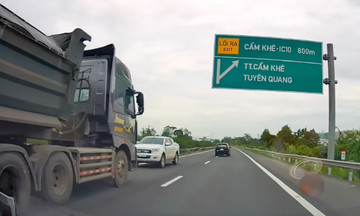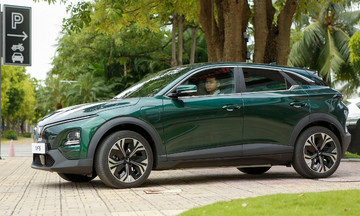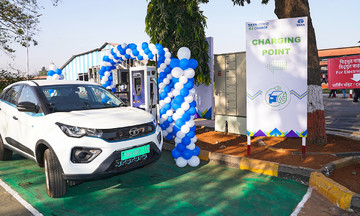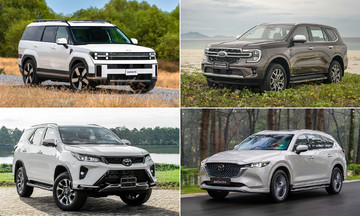Anyone who has driven on a highway at night likely remembers the eerie, lonely, even haunting feeling of the journey. As the sun sets, the highway transforms into a different world: quiet, cold, and detached from everyday life. On the endless road stretching into the thick night, each headlight is a heartbeat, and every moment can be the line between safety and danger.
During the day, highways symbolize modernity, connection, and speed. But as night falls, these advantages become challenges. Light becomes scarce. Although some highways have lighting systems, most sections remain dark, leaving only the headlights of one's own vehicle, like a faint flashlight in a deep forest. Driving at 2 or 3 a.m. when the world seems asleep is a real test of mental fortitude. There are no houses, no shops, no city lights; only the sound of tires on the road, the steady hum of the engine, and a suffocating silence.
Many drivers have shared that they feel like they are lost in another dimension, where all sound, light, and life are drained away. One of the biggest fears of nighttime highway driving is fatigue. Drowsiness behind the wheel is an invisible but extremely dangerous enemy. Many tragic accidents have occurred due to a brief moment of inattention or a sudden nod from the driver.
At night, our natural body clock makes us tired and lose focus. The monotonous light from headlights and reflective signs contributes to a "lullaby" effect, causing drivers to enter a semi-conscious state, with poor reflexes and difficulty handling unexpected situations. That's why many experts recommend thorough physical and mental preparation for nighttime highway driving.
Pushing oneself to reach the destination faster with blurred vision and a foggy mind is the most dangerous choice. Another major fear of nighttime highway driving is the risk of unexpected "foreign objects" or unusual situations. Water buffalo, cows, pedestrians, and motorcycles going in the wrong direction, seemingly only found on national highways or village roads, often appear on highways, especially at poorly controlled intersections.
In addition, broken-down vehicles stopped in the middle of the road without warning lights or signals are lurking accidents. In darkness, visibility decreases, leaving drivers with little time to react. A minor accident can become a disaster at 100–120 km/h. Many people have shared that they feel like "someone is watching them" when passing through deserted roads at night. Whether superstition or psychological effect, this vague fear haunts many drivers, especially when traveling alone.
Some say that just seeing a parked car with no lights on, or a flickering pedestrian by the roadside, makes their heart pound and immediately think of the worst. In many cases, the fear doesn't stem from the supernatural, but from the risk of robbery, carjacking, or scams on the highway, especially in areas with little law enforcement presence.
In my view, although nighttime highways always present risks, thorough preparation and a high level of safety awareness can minimize danger. The key to preventing traffic accidents when driving at night is avoiding driving alone if possible, especially on long night trips. Additionally, I believe everyone should get enough sleep before the trip and be prepared to stop and rest if feeling tired.
Moreover, while driving, do not exceed the speed limit, no matter how empty the road is. This is one of the leading causes of serious traffic accidents. Finally, I want to remind you to always update your maps, GPS, and be familiar with the route to avoid confusion if you take a wrong turn.
Night driving on the highway is not just a route, but a journey of psychological challenge, skill, and endurance. It requires not only alertness but also courage. The anxieties and dangers are not meant to scare us, but to remind us that every turn of the wheel in the dark requires utmost caution. Because ultimately, the destination is not just the end of the road, but the safety of ourselves and those waiting for us.
Reader Thu Sang











